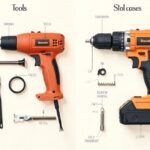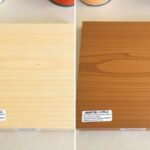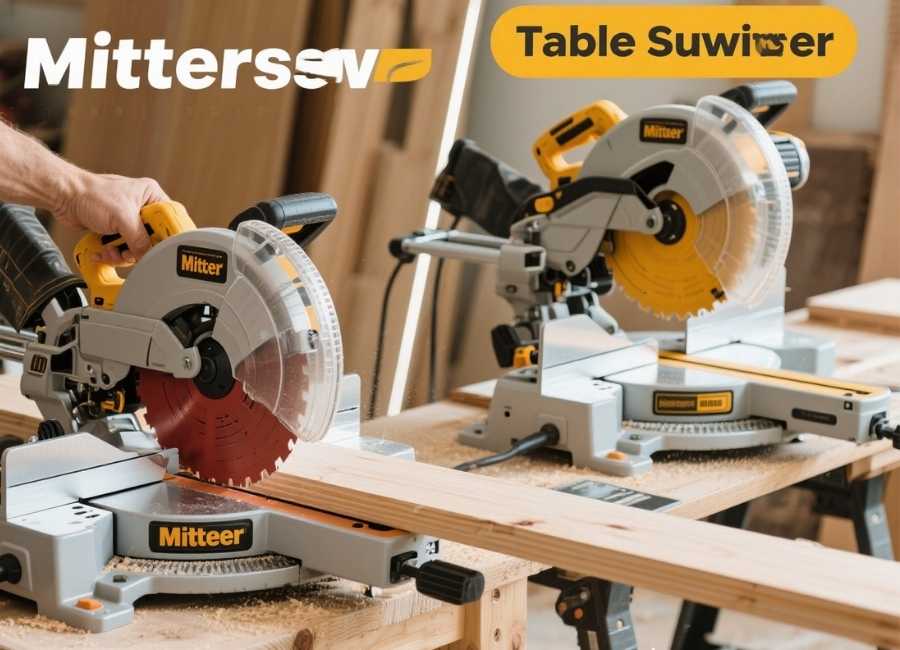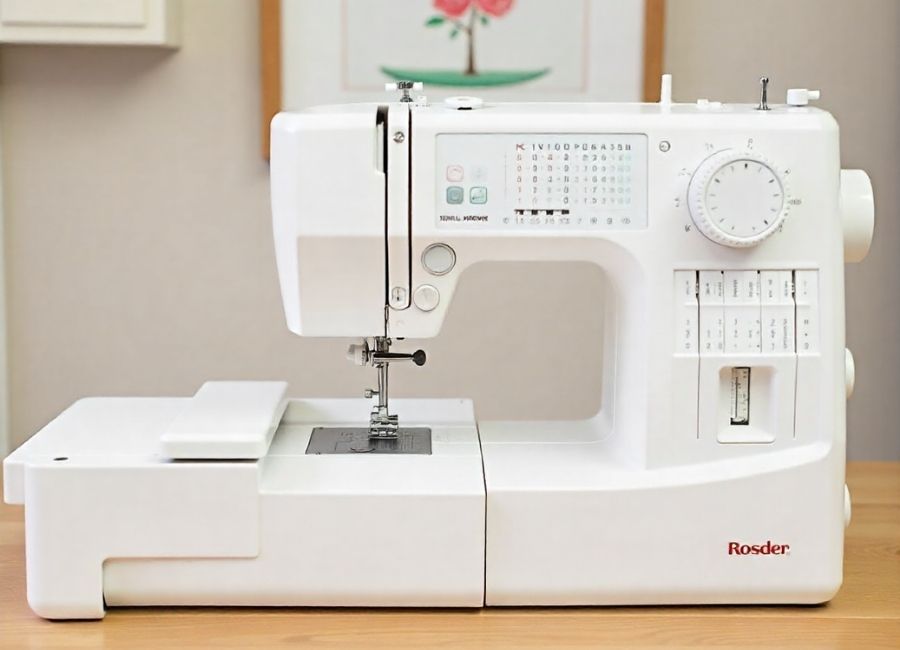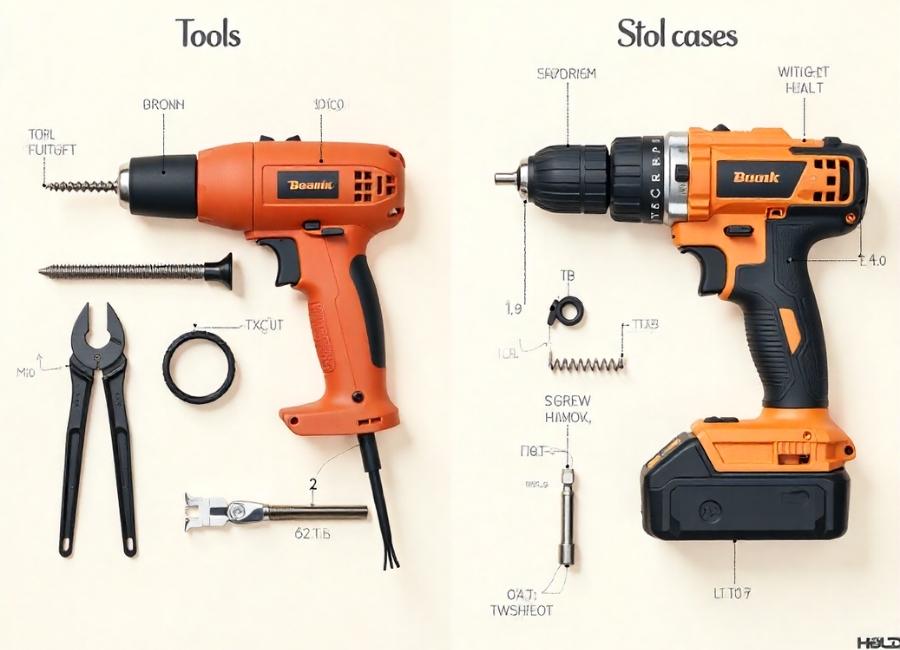Power saws are essential tools for any DIY enthusiast who wants to tackle woodworking projects. They make cutting faster and more accurate. The miter saw and table saw are two of the most popular options. Although they may look alike, they work differently and are best for different tasks. This guide will compare both saws to help you choose the right one for your next project, or decide if you might need both.
What is a Miter Saw?

A miter saw is a powerful tool designed for making crosscuts, or cuts that are perpendicular to the wood’s length. It features a circular blade mounted on a movable arm, allowing users to position the blade precisely where needed. There are different types of miter saws, including:
- Basic miter saw: Makes simple crosscuts.
- Compound miter saw: Can cut angles (miter cuts) and bevels (sloped cuts).
- Sliding miter saw: Has a blade that slides along rails to provide deeper cuts, making it suitable for wider boards.
A miter saw is ideal for cutting small, precise pieces, such as trim, molding, and boards. However, it can only cut as wide as its blade allows. Sliding miter saws can handle wider pieces by moving the blade along rails.
Best for: Precision cuts on trim, molding, and dimensional lumber.
Pros:
- Easy to set up and use.
- Ideal for cutting trim and angles.
- Quick, clean cuts.
Cons:
- Limited to narrower materials (without a sliding feature).
- Cannot handle large sheets, such as plywood.
What is a Table Saw?
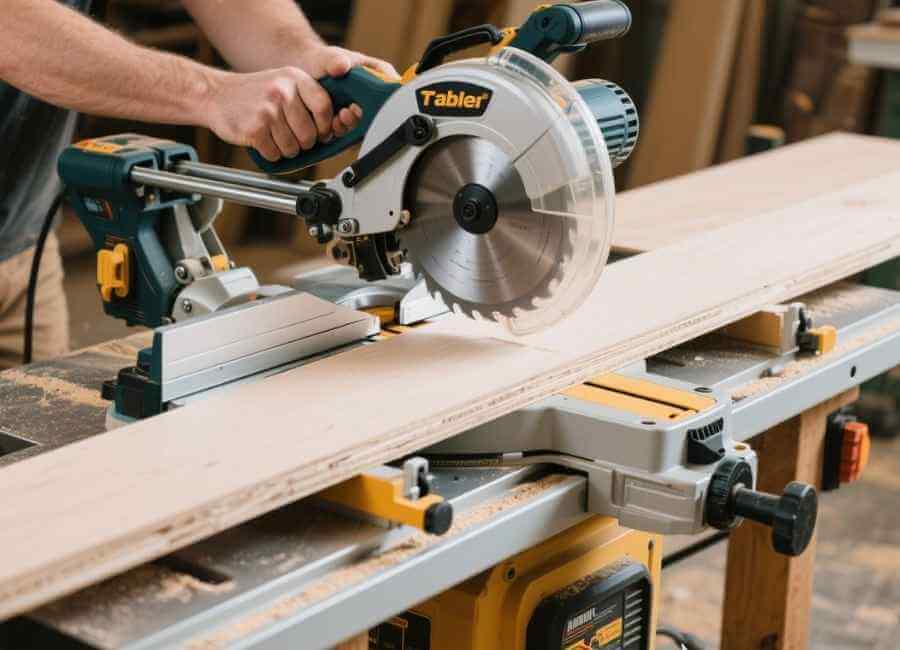
A table saw is a stationary tool featuring a circular blade mounted on a flat table. You push the material into the spinning blade to make long, straight cuts, called rip cuts. Table saws are more versatile than miter saws because they can cut a wide range of materials, including large sheets such as plywood, MDF, and particleboard. (Table Saw vs Miter Saw (Differences + Which to Use), 2022)
While a DIY table saw is perfect for making rough cuts and breaking down large sheets, a shop-grade table saw can also be used for precise finish carpentry, though it’s usually a bulkier tool. With the addition of accessories like a miter gauge, you can make angled cuts similar to those made by a miter saw.
Best for: Cutting large boards, rip cuts, and rough carpentry.
Pros:
- Can handle large sheets, such as plywood and MDF.
- Capable of making rip, bevel, and crosscuts.
- Great for rough carpentry and woodshop projects.
Cons:
- Heavier and harder to move.
- More complex to use accurately for angled and bevel cuts.
Miter Saw vs. Table Saw: Key Differences
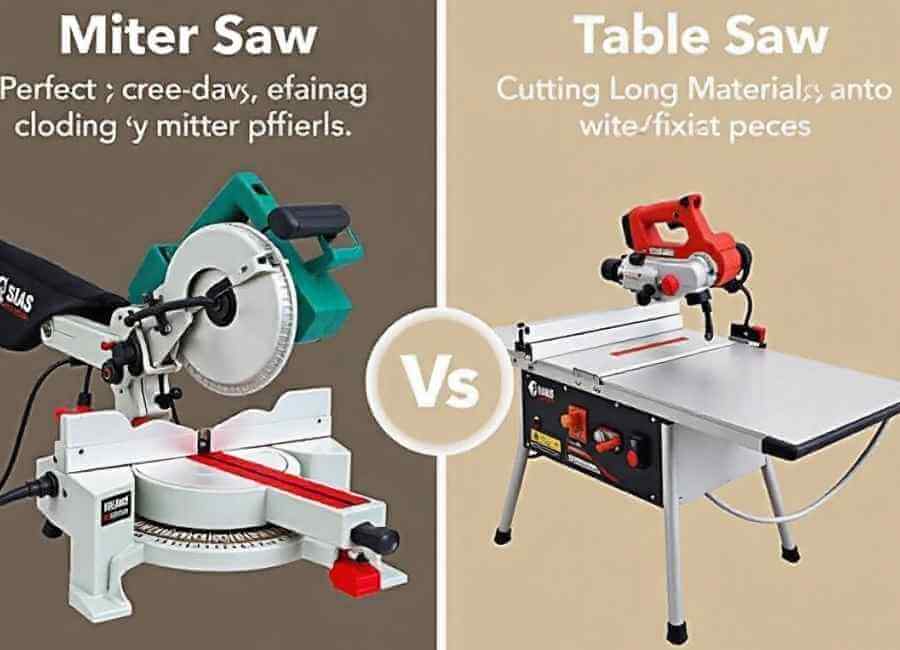
Types of Cuts
- Miter Saw: Perfect for crosscuts, miter cuts, and bevel cuts on shorter pieMiter Saw: Best for crosscuts, miter cuts, and bevel cuts on shorter pieces. It is perfect for making angled cuts, such as those needed for trim or picture frames—the angled and bevel cuts can be achieved with additional accessories, like a miter gauge.
Cutting Long Materials
- Miter Saw: You place the material on the base and lower the blade by hand. Standard miter saws can only cut as wide as the blade, unless you use a sliding model.
- Table Saw: Features a flat table and a fixed blade, making it ideal for cutting large sheets, such as plywood or MDF. You feed the material into the blade from the edge of the table.
Angle and Bevel Cuts
- Miter Saw: Easy to use for angled cuts because the saw head can turn to set positions for quick changes.
- Table Saw: It can make angled and bevel cuts, but these are more challenging to execute accurately and require careful setup and steady hands.
Cut Capacity
- Miter Saw: Can only cut as wide as the blade allows, unless you have a sliding model. Most miter saws can cut between 8 and 12 inches, depending on the blade size and the material being cut. (Miter Saw Blade Sizes – WoodworkMag.Com, n.d.)
- Table Saw: Can cut boards of any length with proper support, but the maximum cut width and depth depend on the saw’s size and blade capacity.
Portability
- Miter Saw: Most models are light and easy to move, usually weighing between 20 and 60 pounds. (Metabo HPT C8FSESM 8-1/2″ Sliding Compound Miter Saw, n.d.)
- Table Saw: Heavier and harder to move, especially the bigger ones. Many DIY table saws have wheels to make moving them easier.
Precision
- Miter Saw: Very precise for cutting small to medium pieces. The material stays still while the blade moves down to cut.
- Table Saw: Not as precise as a miter saw because you move the material through the blade. Still, with good technique and setup, it can make very accurate cuts.
Safety
- Miter Saw: Fewer injuries occur with miter saws than with table saws, but they are still dangerous. The most common accidents happen when users cross their arms or hold the material improperly.
- Table Saws: Table saws are associated with a higher incidence of injuries, often due to kickback, which occurs when the blade throws the wood back. (Thousands injured annually in table saw incidents: study, 2010) Newer models feature safety enhancements designed to help prevent accidents.
Versatility
- Miter Saw: Can’t cut large sheets of material.
- Table Saw: More versatile and can do many types of cuts, especially if you use accessories like a miter gauge or crosscut sled.
Cost
- Miter Saw: Basic models start at about $120, while top sliding models can cost up to $1,900. (How Much Do Miter Saws Cost: Brands, Features, and Prices, 2025)range from $220 for a basic DIY model to over $8,000 for a high-end, cabinet-style saw. (Miter Saw vs. Table Saw | Which One Should You Get?, 2025)
Which is Better for You: Miter Saw or Table Saw?
If you are new to woodworking or need to make crosscuts and angle cuts, a miter saw is probably your best option. It is easy to use and very precise, making it ideal for trimming and molding.
On the other hand, if you’re working with larger materials, such as plywood, or need to make a variety of cuts, a table saw offers more flexibility and capacity. However, keep in mind that table saws require more skill to use accurately, especially for angled and beveled cuts.
Conclusion
Both saws have their own uses in woodworking. If you can, having both a miter saw and a table saw is ideal. However, if you only have space or money for one, consider the projects you do most often and choose the saw that best suits those needs.
FAQ
Q: Which is better, a table saw or a miter saw?
A: It depends on the types of cuts you need to make. Miter saws are better suited for precise crosscuts and angled cuts, while table saws excel at ripping large boards and handling larger materials.
Q: Can I use a miter saw like a table saw?
A: While miter saws can make crosscuts, they aren’t suitable for ripping material lengthwise, which is the primary function of a table saw.
Q: What is the most useful DIY saw?
A: For most DIYers, a miter saw is a great starting tool for making accurate cuts on smaller materials. If you’re working with large sheets or need versatility, a table saw might be the better choice.
Q: Can you rip a 2×4 with a table saw?
A: Yes, a table saw is perfect for ripping a 2×4 along its length, making it an ideal tool for cutting larger pieces of lumber.




